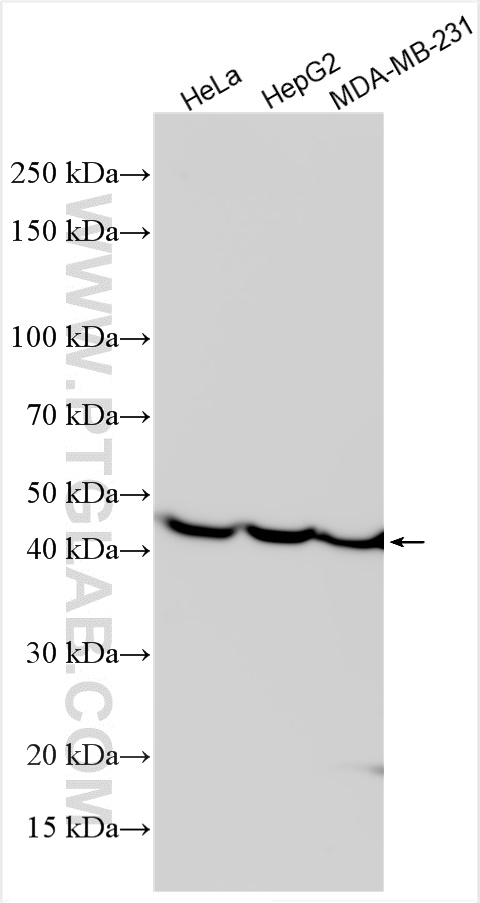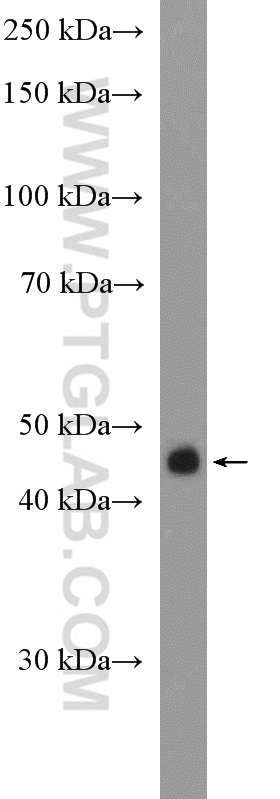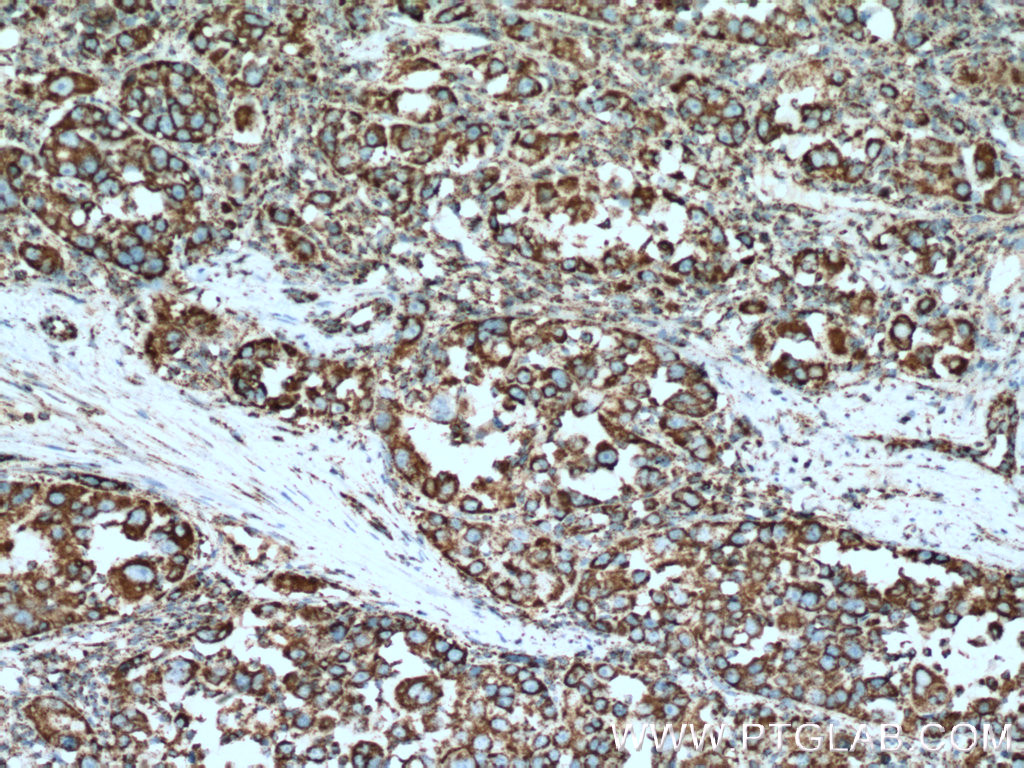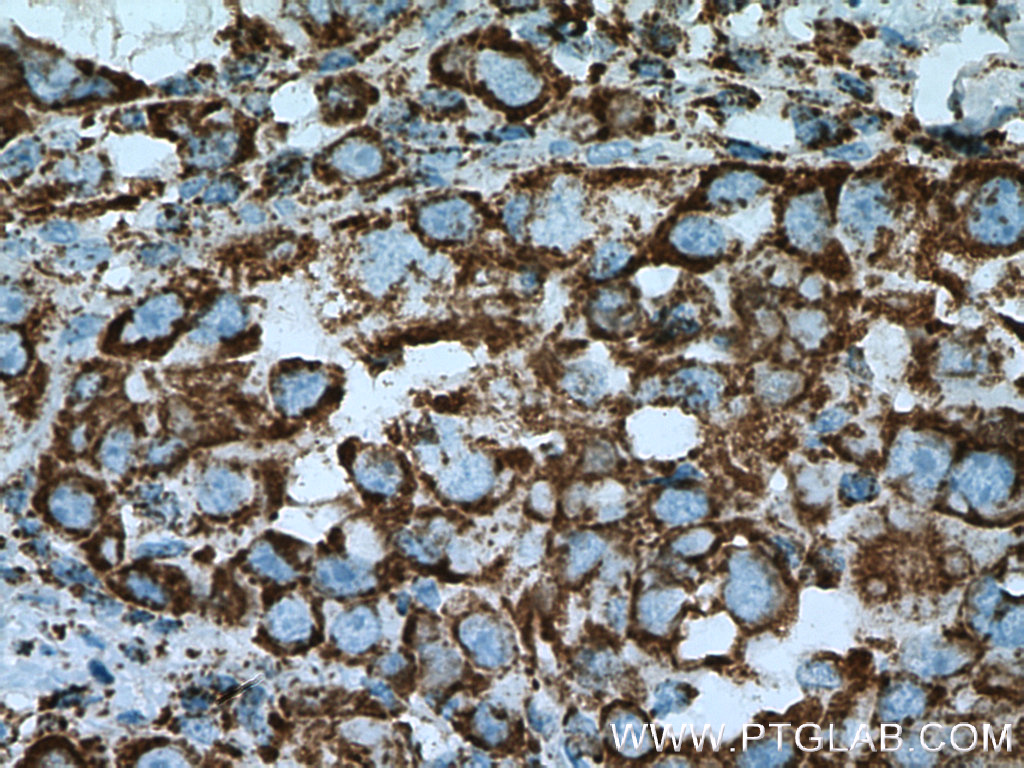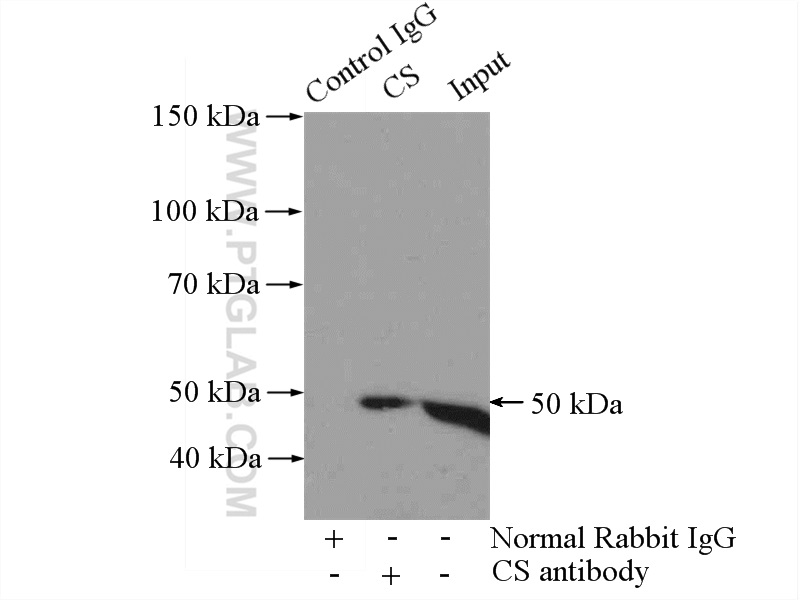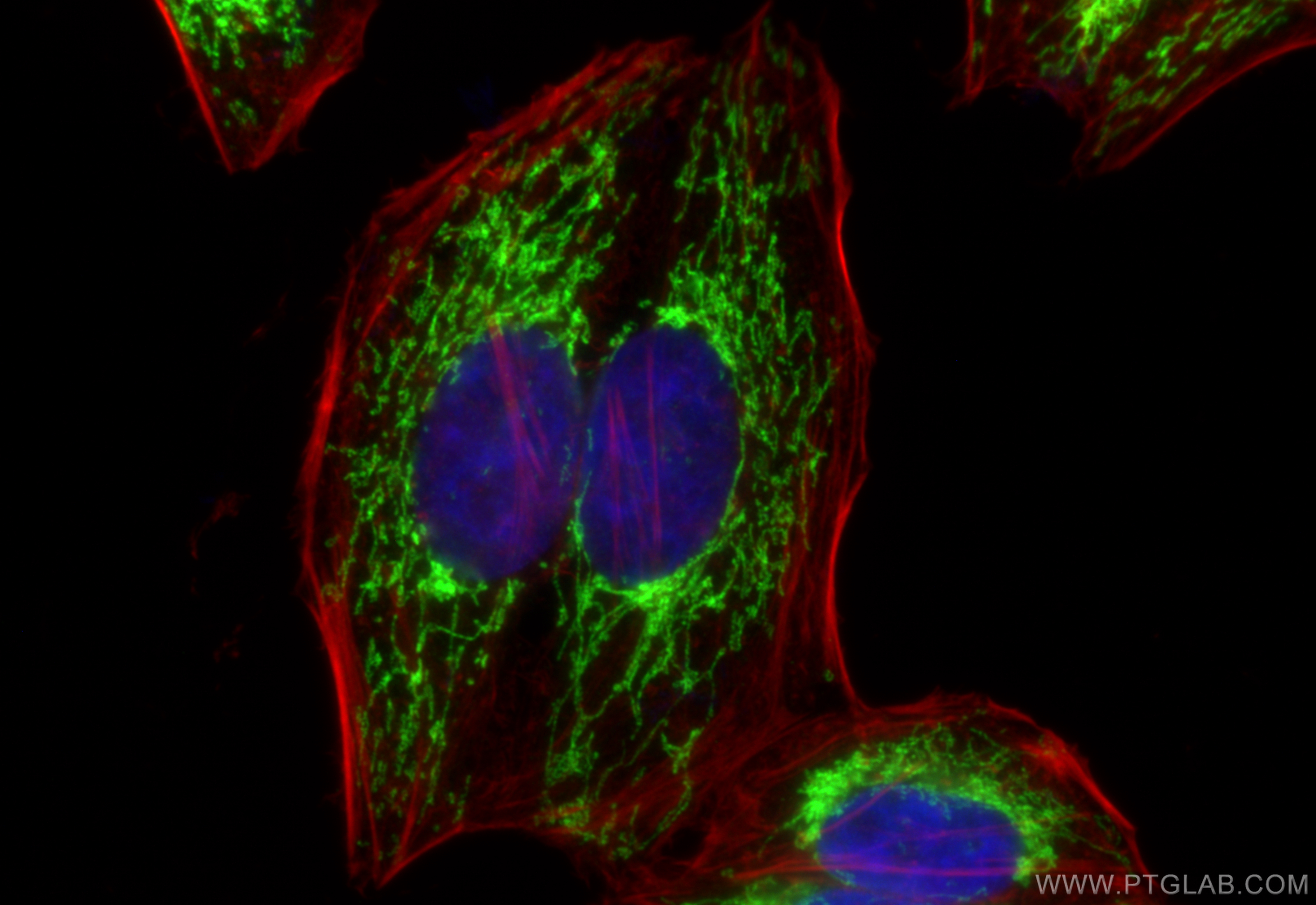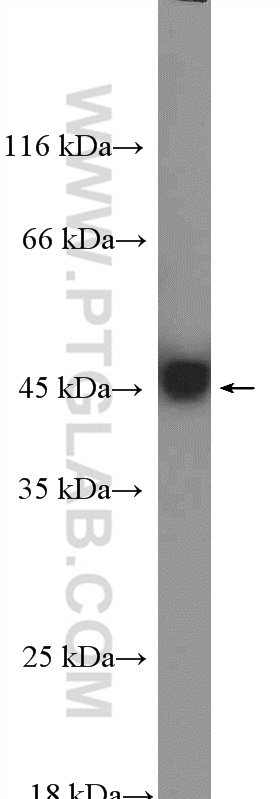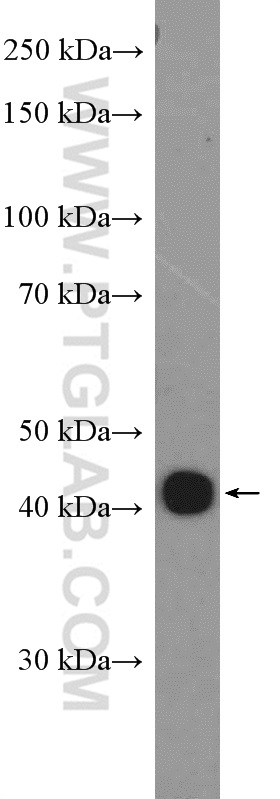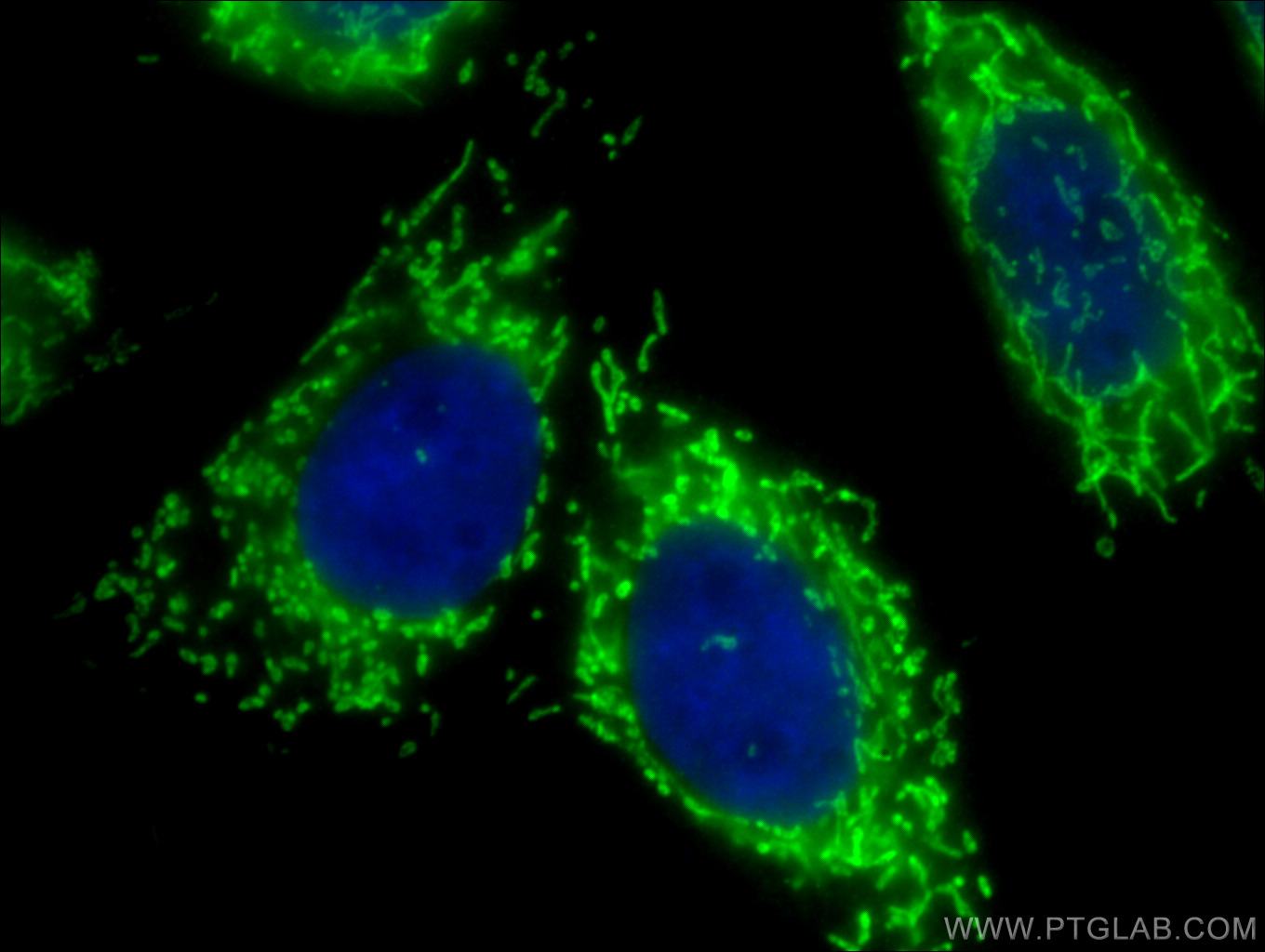验证数据展示
经过测试的应用
| Positive WB detected in | HeLa cells, mouse heart tissue, HepG2 cells, MDA-MB-231 cells |
| Positive IP detected in | mouse heart tissue |
| Positive IHC detected in | human liver cancer tissue Note: suggested antigen retrieval with TE buffer pH 9.0; (*) Alternatively, antigen retrieval may be performed with citrate buffer pH 6.0 |
| Positive IF/ICC detected in | HepG2 cells |
推荐稀释比
| 应用 | 推荐稀释比 |
|---|---|
| Western Blot (WB) | WB : 1:2000-1:16000 |
| Immunoprecipitation (IP) | IP : 0.5-4.0 ug for 1.0-3.0 mg of total protein lysate |
| Immunohistochemistry (IHC) | IHC : 1:100-1:400 |
| Immunofluorescence (IF)/ICC | IF/ICC : 1:50-1:500 |
| It is recommended that this reagent should be titrated in each testing system to obtain optimal results. | |
| Sample-dependent, Check data in validation data gallery. | |
产品信息
16131-1-AP targets Citrate synthase in WB, IHC, IF/ICC, IP, CoIP, ELISA applications and shows reactivity with human, mouse, rat samples.
| 经测试应用 | WB, IHC, IF/ICC, IP, ELISA Application Description |
| 文献引用应用 | WB, IHC, IF, IP, CoIP |
| 经测试反应性 | human, mouse, rat |
| 文献引用反应性 | human, mouse, rat, rabbit, chicken, hamster |
| 免疫原 |
CatNo: Ag9117 Product name: Recombinant human CS protein Source: e coli.-derived, PGEX-4T Tag: GST Domain: 132-466 aa of BC010106 Sequence: EQVSWLSKEWAKRAALPSHVVTMLDNFPTNLHPMSQLSAAVTALNSESNFARAYAQGISRTKYWELIYEDSMDLIAKLPCVAAKIYRNLYREGSGIGAIDSNLDWSHNFTNMLGYTDHQFTELTRLYLTIHSDHEGGNVSAHTSHLVGSALSDPYLSFAAAMNGLAGPLHGLANQEVLVWLTQLQKEVGKDVSDEKLRDYIWNTLNSGRVVPGYGHAVLRKTDPRYTCQREFALKHLPNDPMFKLVAQLYKIVPNVLLEQGKAKNPWPNVDAHSGVLLQYYGMTEMNYYTVLFGVSRALGVLAQLIWSRALGFPLERPKSMSTEGLMKFVDSKSG 种属同源性预测 |
| 宿主/亚型 | Rabbit / IgG |
| 抗体类别 | Polyclonal |
| 产品类型 | Antibody |
| 全称 | citrate synthase |
| 别名 | CS, CISY, Citrate, Citrate synthase, mitochondrial, EC:2.3.3.1 |
| 计算分子量 | 466 aa, 52 kDa |
| 观测分子量 | 45-50 kDa |
| GenBank蛋白编号 | BC010106 |
| 基因名称 | Citrate Synthase |
| Gene ID (NCBI) | 1431 |
| RRID | AB_1640013 |
| 偶联类型 | Unconjugated |
| 形式 | Liquid |
| 纯化方式 | Antigen affinity purification |
| UNIPROT ID | O75390 |
| 储存缓冲液 | PBS with 0.02% sodium azide and 50% glycerol, pH 7.3. |
| 储存条件 | Store at -20°C. Stable for one year after shipment. Aliquoting is unnecessary for -20oC storage. |
背景介绍
Citrate synthase (CS), the first and rate-limiting enzyme of the tricarboxylic acid cycle, plays a key role in regulating energy generation of mitochondrial respiration(PMID:19479947).It belongs to the citrate synthase family. The deduced 466-amino acid protein contains an N-terminal mitochondrial targeting sequence and a motif highly conserved in citrate synthases(PMID:12549038). It can exsit as a dimer(PMID:8749851). Northern blot analysis detected no CS expression in thymus and small intestine(PMID:12549038). This antibody is specific to CS.
实验方案
| Product Specific Protocols | |
|---|---|
| IF protocol for Citrate synthase antibody 16131-1-AP | Download protocol |
| IHC protocol for Citrate synthase antibody 16131-1-AP | Download protocol |
| IP protocol for Citrate synthase antibody 16131-1-AP | Download protocol |
| WB protocol for Citrate synthase antibody 16131-1-AP | Download protocol |
| Standard Protocols | |
|---|---|
| Click here to view our Standard Protocols |
发表文章
| Species | Application | Title |
|---|---|---|
Adv Mater Supramolecular Hydrogel with Ultra-Rapid Cell-Mediated Network Adaptation for Enhancing Cellular Metabolic Energetics and Tissue Regeneration | ||
Nat Cell Biol Breast-cancer-secreted miR-122 reprograms glucose metabolism in premetastatic niche to promote metastasis. | ||
ACS Cent Sci A Selective SARS-CoV-2 Host-Directed Antiviral Targeting Stress Response to Reactive Oxygen Species | ||
Mol Cell Filamentous GLS1 promotes ROS-induced apoptosis upon glutamine deprivation via insufficient asparagine synthesis. | ||
Nat Commun Lin28/let-7 axis regulates aerobic glycolysis and cancer progression via PDK1. |

